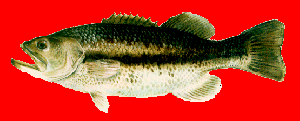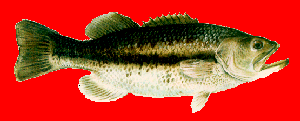| Common name | Scientific name |
| rainbow trout | Oncorhychus mykiss |
| atlantic salmon | Salmo salar |
| chum slamon | Oncorhychus keta |
| coho salmon | Oncorhychus kisutch |
| chinook salmon | Oncorhychus tshawytcha |
| northern pike | Esox lucius |
| gilthead bream | Sparus aurata |
| red sea bream | Pagrosomus major |
| common carp | Cyprinus carpio |
| Indian major carp | Labeo rohita |
| loach | Misgurnus anguillicaudatus |
| channel cat fish | Ictalurus punctatus |
| african cat fish | Clarius gariepinus |
| tilapia | Oreochromis niloticus |
and the most common protein coding genes employed are: prolactin, growth hormone, antifreeze, insulin-like growth factor-1, lysozyme, and gonadotropin releasing hormone.
It is important to stress that there are important constraints which operate in choosing the origin of the sequence used and the form of the construct. The first consideration is whether to inject a linear sequence consisting only of 5' regulatory region (which will include the promoter) the coding region, and the 3' poly(A) sequence, or whether to inject the entire plasmid in linear or circular form. There are good reasons for choosing the former, partly because it avoids the complexity of interference with transgene expression by the plasmid sequence and possible read through from the plasmid promoter to the transgene. It also avoids the possible integration of sequences of bacterial origin. Secondary, whenever possible it is best to use a genomic rather than a cDNA sequence, since introns often contain important enhancer regions. And, thirdly, it is best to select a sequence from a species as closely related as possible to the fish species receiving the transgene. Thus, although genes of mammalian origin are often useful if the protein sequence has been strongly conserved in evolution, it is safer to choose a coding sequence from a closely related species. This is even more true of the 5' flanking region, which in general is much less conserved in evolution and, therefore, may well not be recognized by the transcription factors or the RNA polymerase enzymes present in the recipient species.
It is increasingly becoming possible to use constructs which are not only of entirely fish origin with respect to both the protein coding sequence and the 5' regulatory and 3' poly(A) sequence, but are even of homologous origin, namely taken from the same species of fish as is being made transgenic. This seems a desirable situation both to allay consumer anxieties about the product and to ensure good transgene expression levels.
There are a number of other aspects of transgene integration, expression and transmission in fish which are noteworthy, These aspects are the implications of transgene integration site, transgene expression in spatial and temporal terms and transgene transmission to progeny.

atlantic salmon (Salmo sarar)


